At the end of the harvest season, if you’ve had a successful garden, you may be overrun with tons of fresh veggies that you need to use up before they go to waste. Canning and dehydrating produce are two great options for food preservation, but they do require potentially expensive equipment. One alternative to traditional canning is lacto-fermentation, which can be done easily with minimal investment in supplies.
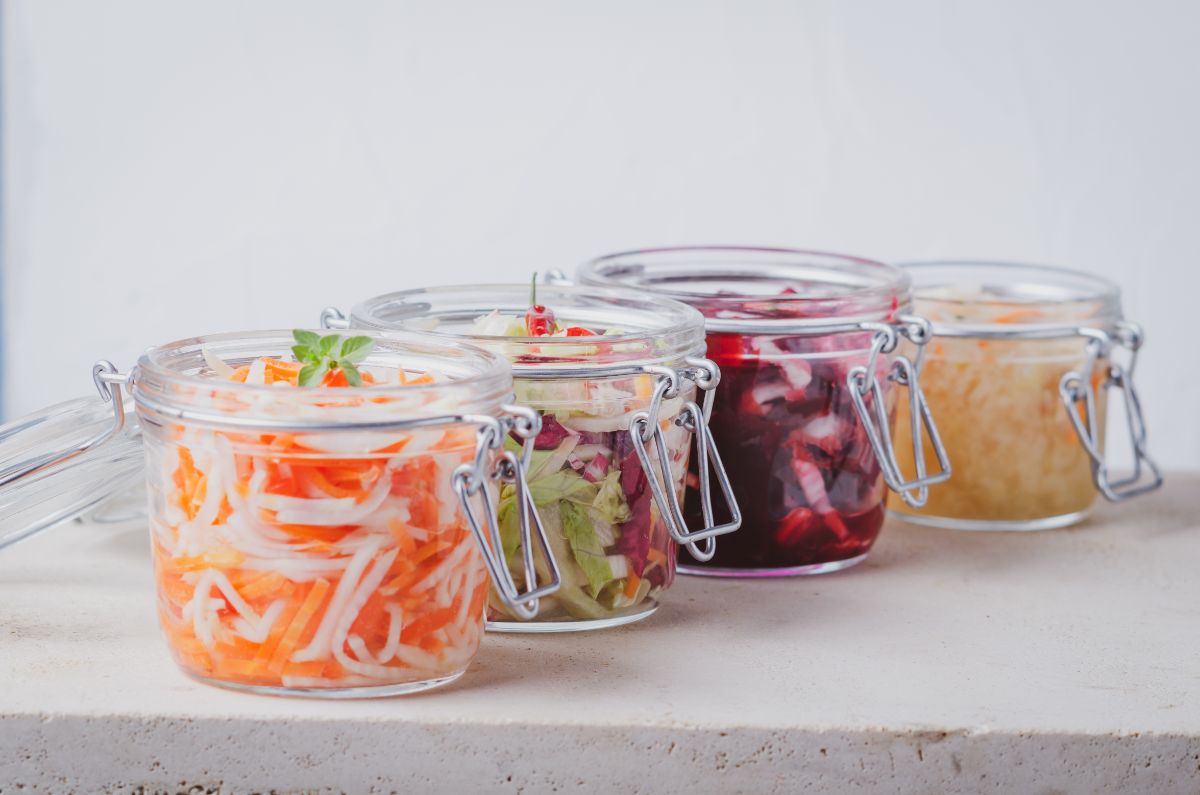
Lacto-fermentation is a food preservation technique, which uses a simple crock or some glass canning jars to ferment and preserve fresh veggies. The end result is a tangy and delicious crock of preserved foods which is chocked full of gut-healthy probiotics.
If you’ve ever sampled deli pickles or sauerkraut, you’ve enjoyed the results of lacto-fermentation. But while these are the most classic ways lacto-fermentation is used, there are tons of other vegetables and recipes to try out with this super easy food preservation method.
In this guide, we’ll explore the top plants to grow to use in lacto-fermentation recipes. And we’ve also compiled some of our favorite recipes to share too. Once you try lacto-fermenting at home, you may just put away all your canning equipment because this method is so much easier!
Jump to:
12 best vegetables to grow for lacto-fermentation
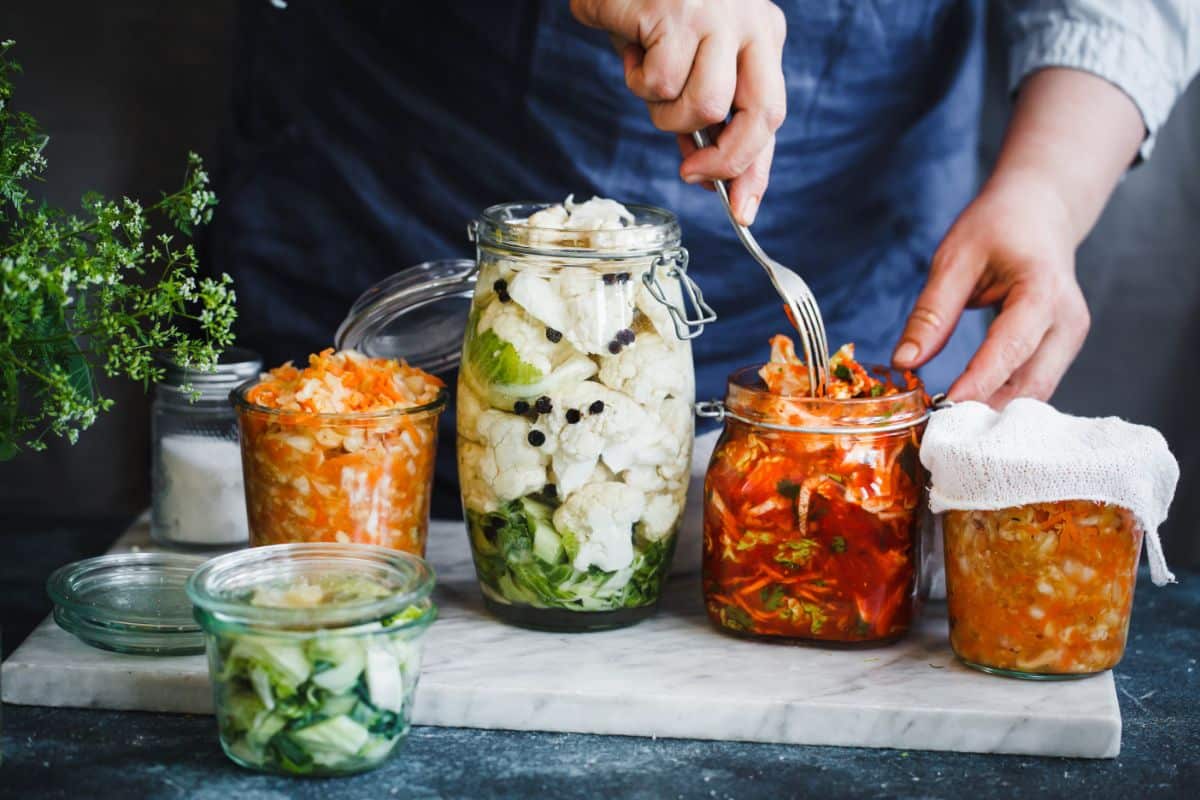
Due to their texture and other qualities, certain vegetables simply lend themselves better to lacto-fermentation than others. Below are some of the top foods to try fermenting; however, once you see the benefits of this preservation technique, you may want to experiment with other veggies too!
1. Cabbage
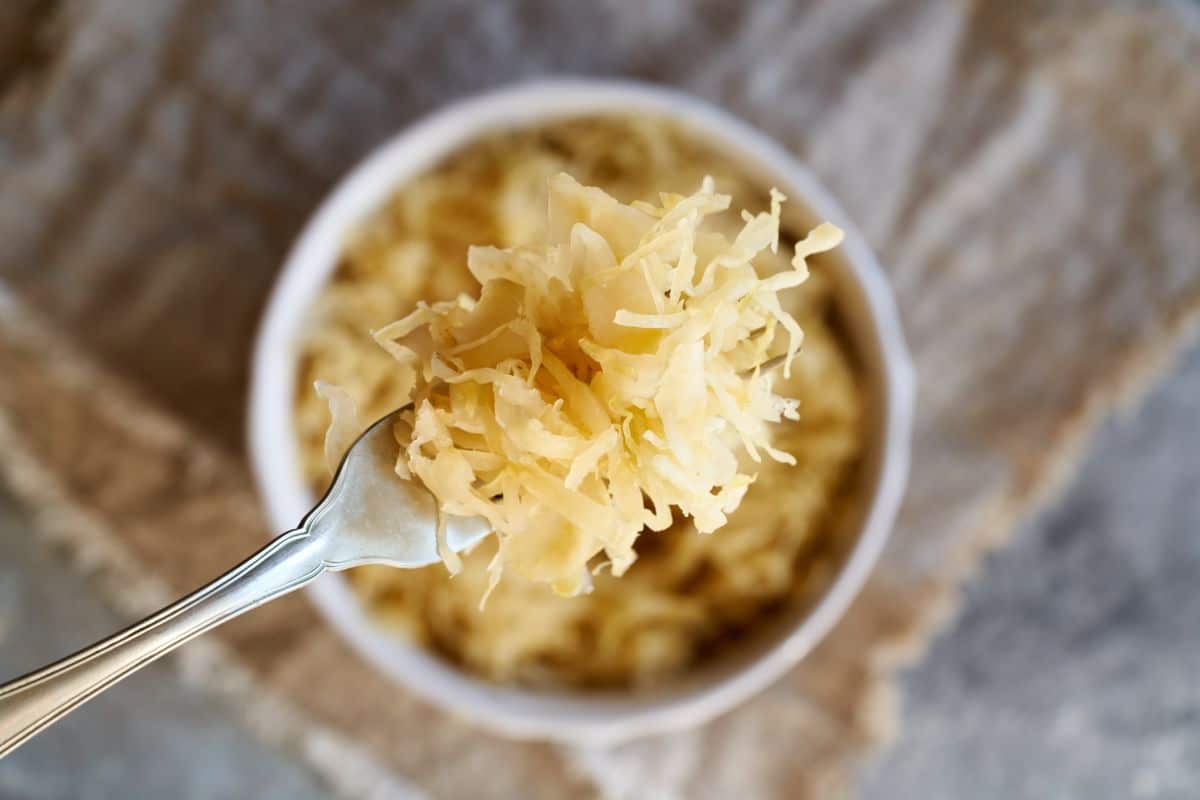
When it comes to lacto-fermentation, cabbage is one of the classic vegetable choices to try. Easy to come by and process, cabbage is ideal for home preservation, especially when turned into a tasty and gut-healthy sauerkraut!
Classic sauerkraut can be made with or without salt, for salt-sensitive individuals. Using red or green cabbage, you can make a simple sauerkraut with just some pickling salt and (optional) caraway seeds. However, for the more adventurous palates, adding spices like turmeric and ginger can make a sauerkraut that’s bursting with flavor.
If you don’t mind spice, you can also make kimchi at home. Just keep in mind that kimchi usually uses napa cabbage, rather than standard round cabbages.
Or, for something different, try out fermented Salvadoran curtido slaw.
2. Garlic
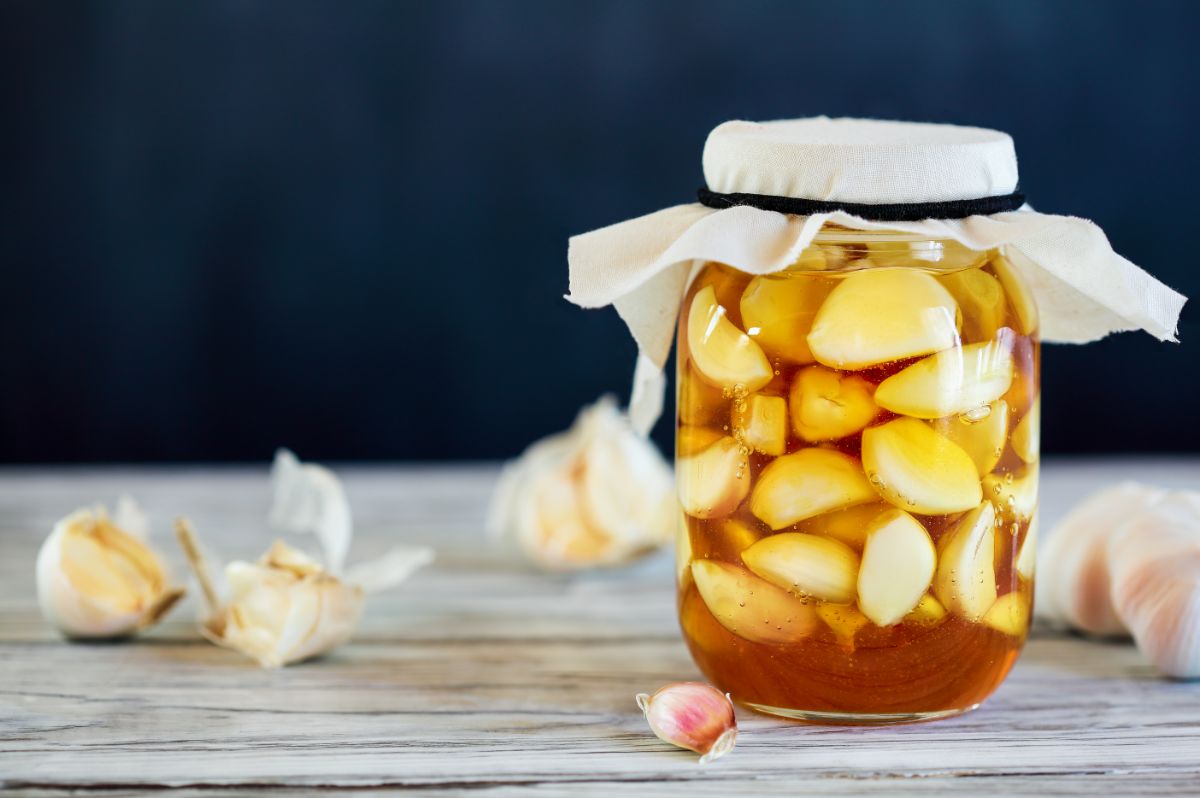
Garlic is rich in antioxidants, vitamins and minerals, but if you end up with a bumper crop of too much garlic, what are you to do? Ferment it, of course!
Lacto-fermentation will mellow out garlic’s spiciness a bit, so it’s a great option if you don’t like too much heat. Even better, all of garlic’s health benefits remain in the fermented product, and may be even easier to digest than non-fermented garlic.
When processing garlic, garlic cloves can either be mashed into a paste or fermented whole. Fermented mashed garlic is easy to mix into vinaigrettes and sauces or to spread on toast. Whole fermented garlic, on the other hand, is just right when served up with pickles or as a flavorful garish on pretty much any dish.
If you notice your garlic turning blue during the fermentation process, don’t worry. This is perfectly normal and simply a reaction to the acidity in the fermented product.
For even more flavor, garlic can also be fermented in honey!
3. Carrots
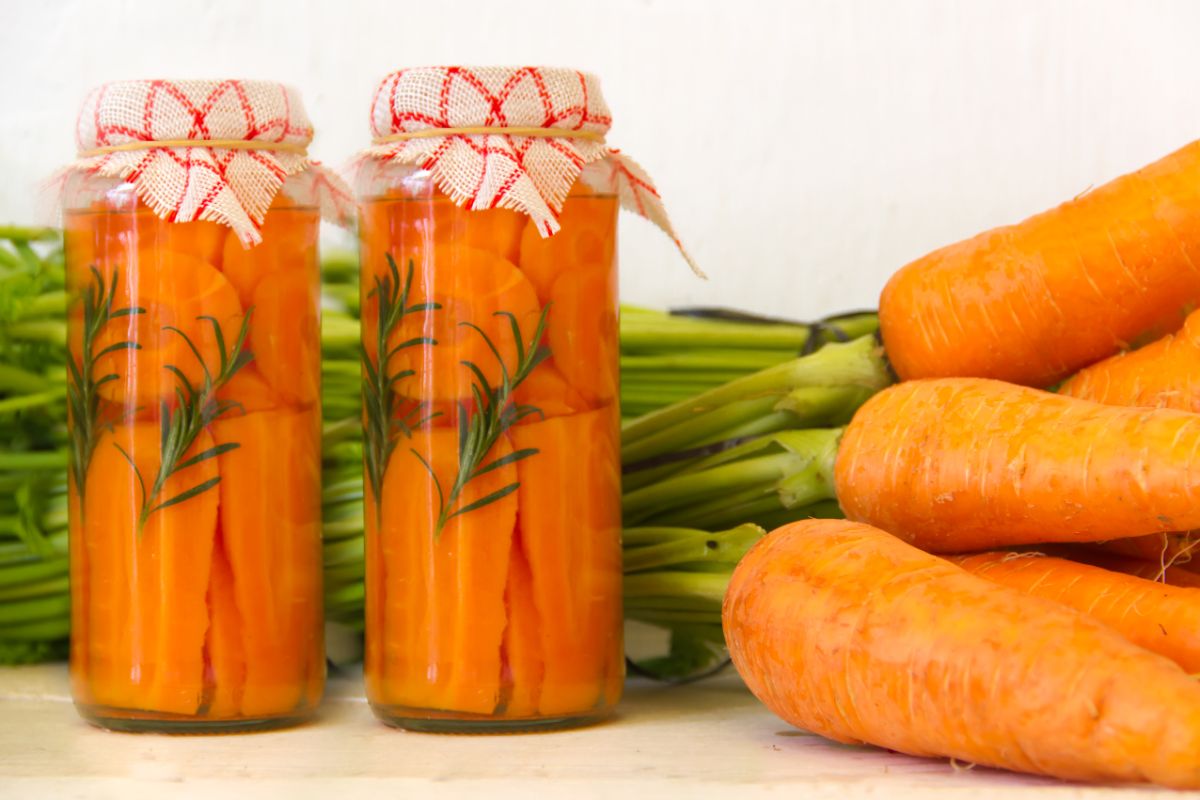
A late fall crop of carrots may spell trouble for your kitchen if you’re overwhelmed with more carrots than you can use. Fermenting your extra root crop will make sure nothing goes to waste and will produce a tasty condiment or side that goes with so many other foods.
Depending on your tastes, you can chop your carrots into matchsticks to make a carrot-based sauerkraut of sorts. Or you can slice the carrots into chips or sticks for more versatility and lots of crunch.
If you’re tired of the same old tastes, create a flavor sensation by mixing different spices into your fermentation crock. Star anise, for example, can foster warm autumnal flavors, while a jar of curried carrots are hard to resist.
4. Cauliflower
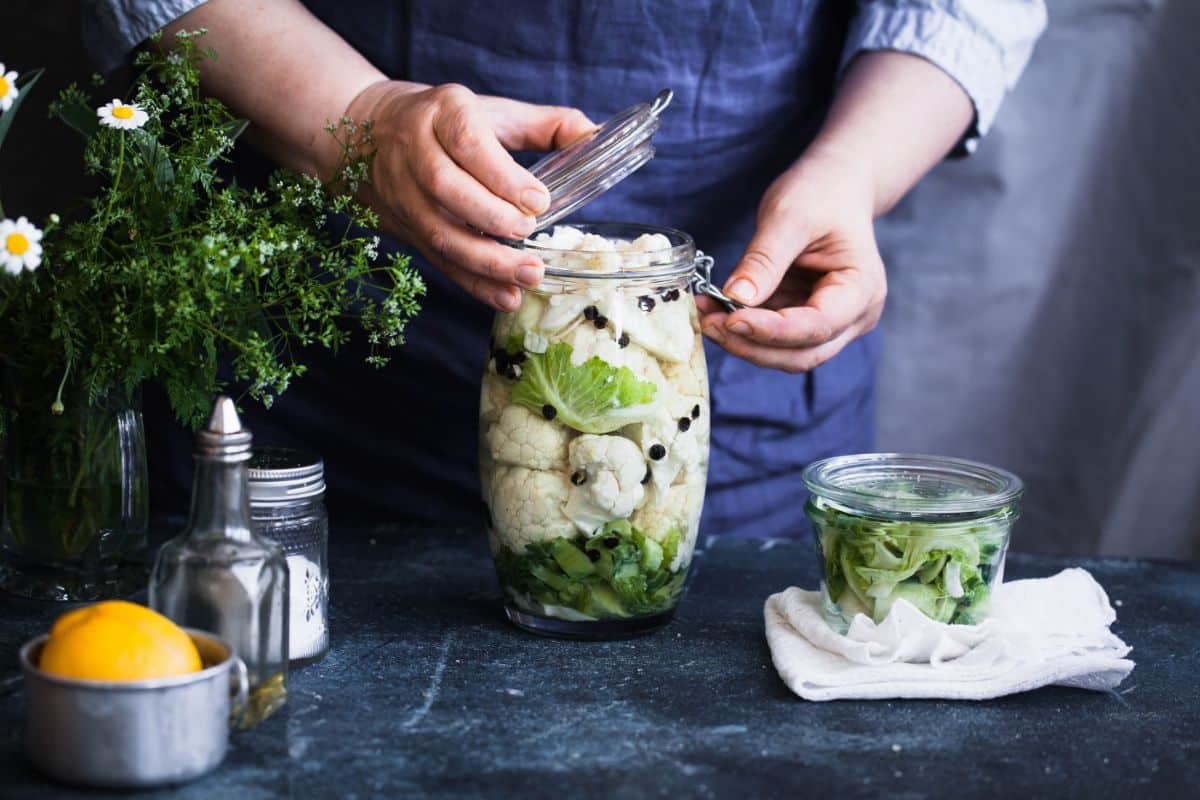
Fermented cauliflower is delicious on its own, but it works well when jarred up with other garden fresh veggies, for extra color and flavor. One traditional, Italian choice is a fermented giardiniera with peppers, carrots and cauliflower. Served as a side or as a snack, it’s a must-have.
If you have only white cauliflower, give it a color boost by fermenting it with a few slices of beets. Or, for additional color in your pantry and your plate, try out some of the more unusual cauliflower options, like purple cauliflower or Romanesco.
5. Onions
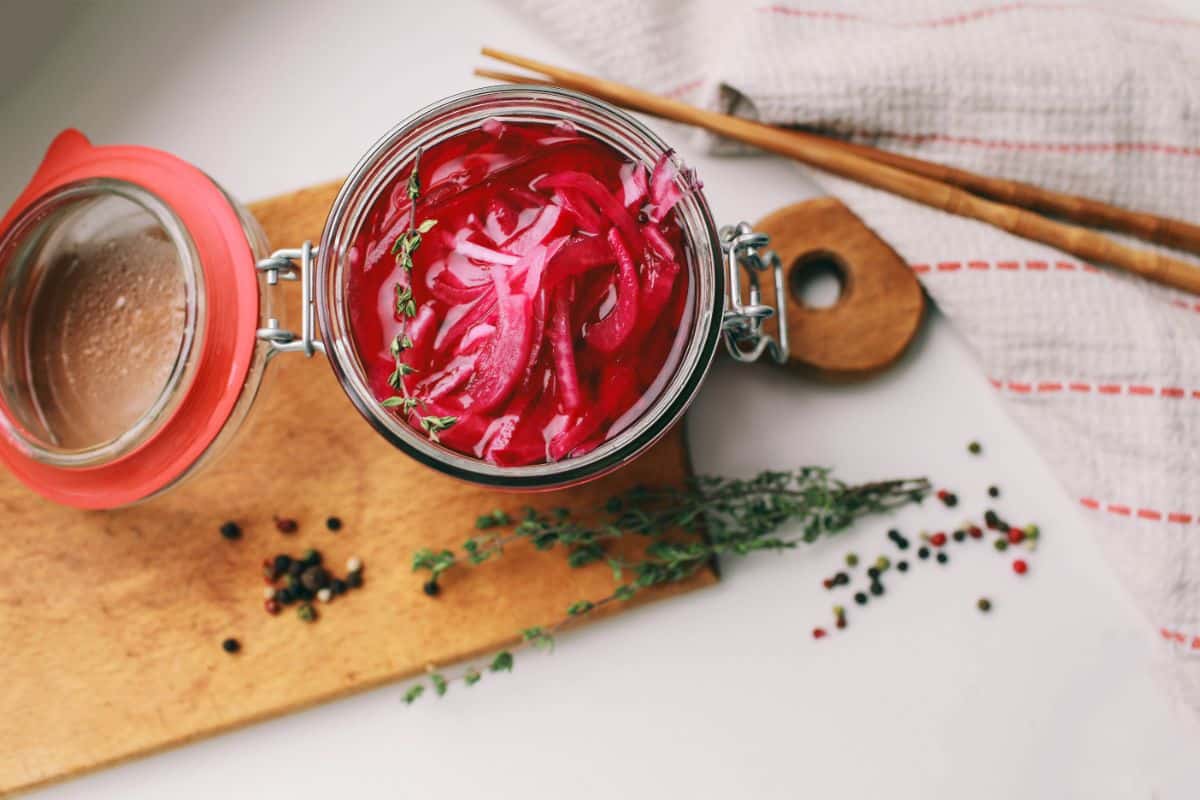
As with garlic, the spicy flavor of onions is softened by lacto-fermentation, while the gut-boosting properties are enhanced. Unliked pickled onions, fermented ones have lower acidity levels, so they won’t compete with the flavors of other ingredients quite as much in recipes.
For extra color, try fermenting red onions to serve on your next burger or sandwich.
Lacto-fermented cipollini or cocktail onions are another fun option that works particularly well when served with fondue.
6. Peppers
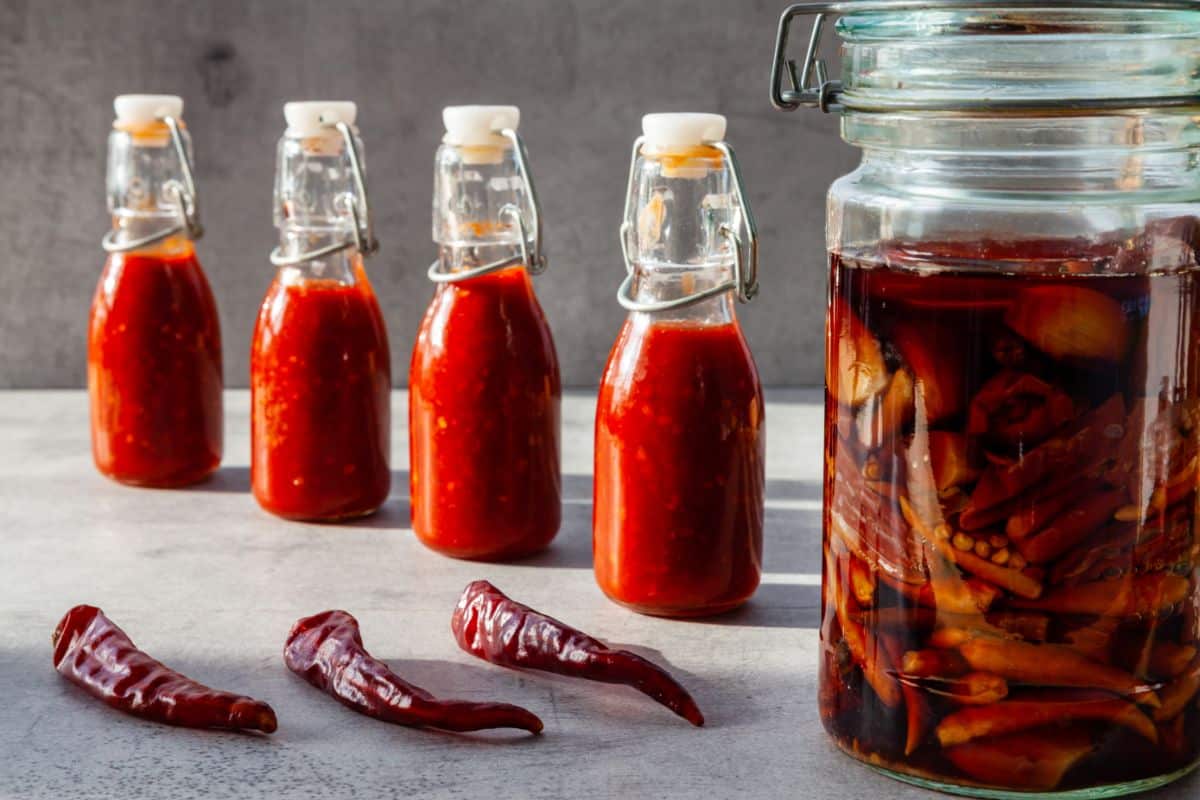
While any pepper can be lacto-fermented, fermenting hot peppers is a good idea for a number of reasons.
Lacto-fermentation can dampen the heat in really hot peppers, so if you ended up with more cayennes than you can use, this process can help prevent food waste. However, fermenting pureed hot peppers into your own homemade hot sauces is a special treat, as flavors blend beautifully together into a mouth-watering condiment that will put storebought hot sauces to shame.
If you love spice, try out a garlicy hot sauce like this one, or opt for this classic fiery flavor with tons of heat. If you don’t like spice, you can always swap out some of the hot peppers in these recipes for more mild ones, or even spice-free bell peppers.
While hot sauces are often blended up into a fine puree, you can keep peppers whole too and just use the spicy brine as a flavor enhancer in dishes. Alternatively, you can ferment whole peppers to serve up as garnishes or as burger toppings.
7. Radishes

Spring through fall, radishes are one of the most reliably productive vegetables you can grow. Both cold-hardy and fast growing, if you plant radishes seeds, you’ll usually find yourself overrun with more radishes than you can use just a few weeks after planting.
Fermenting radishes with salt and standard pickling spices, like dill or hot pepper flakes, is one simple option. But you can also start your radish ferment with whey produced from homemade cheesemaking for another creative spin.
Radishes are also perfect for mixing into kimchi recipes, or whipping up into a jar of fermented daikon radishes to serve with banh mi!
8. Cucumber
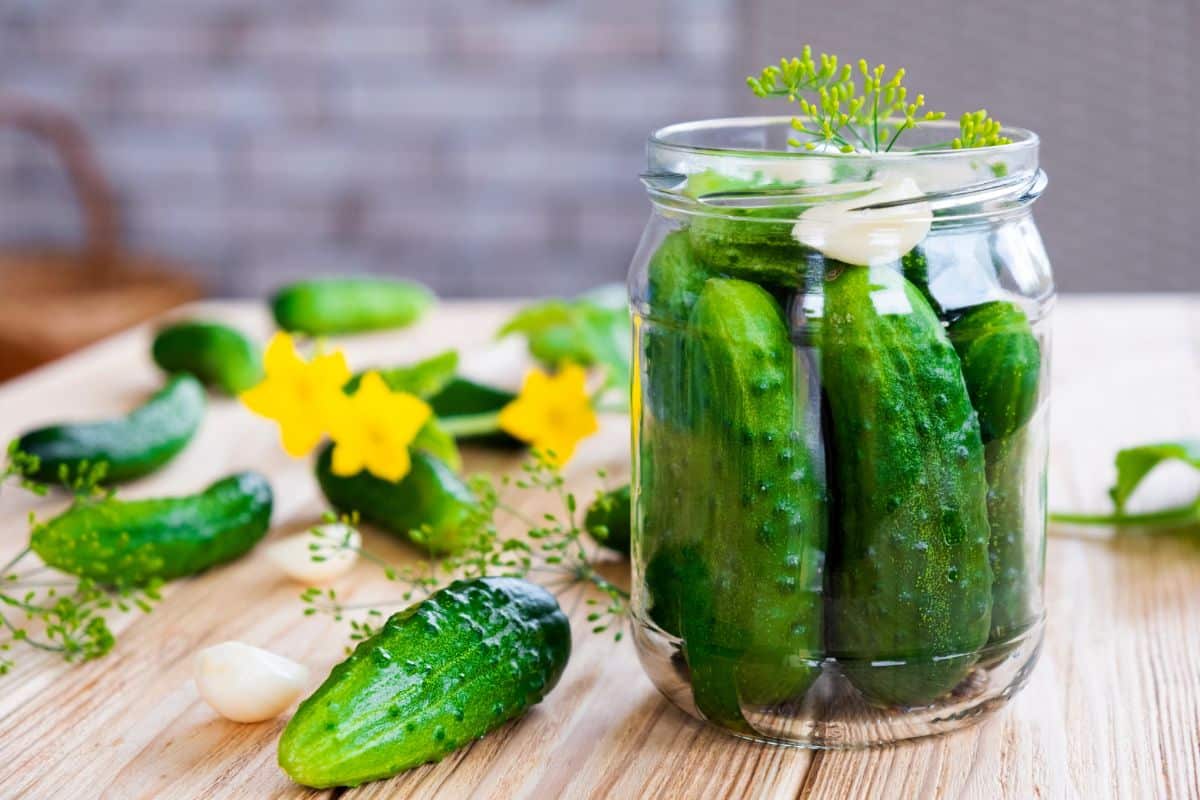
Sweet and salty bread and butter-style pickles are usually produced with traditional canning methods. But for that classic dill pickle flavor that tastes like it came straight out of a New York deli, you need to try lacto-fermenting.
These mouth-watering pickles taste super fresh and have an excellent crunch when served with a burger or sandwich. And, even better, they’re full of probiotics, so they’re healthy too!
For a bit more heat, try out these spicy lacto-fermented pickles, with a bit of fish sauce for umami flavor.
9. Beets
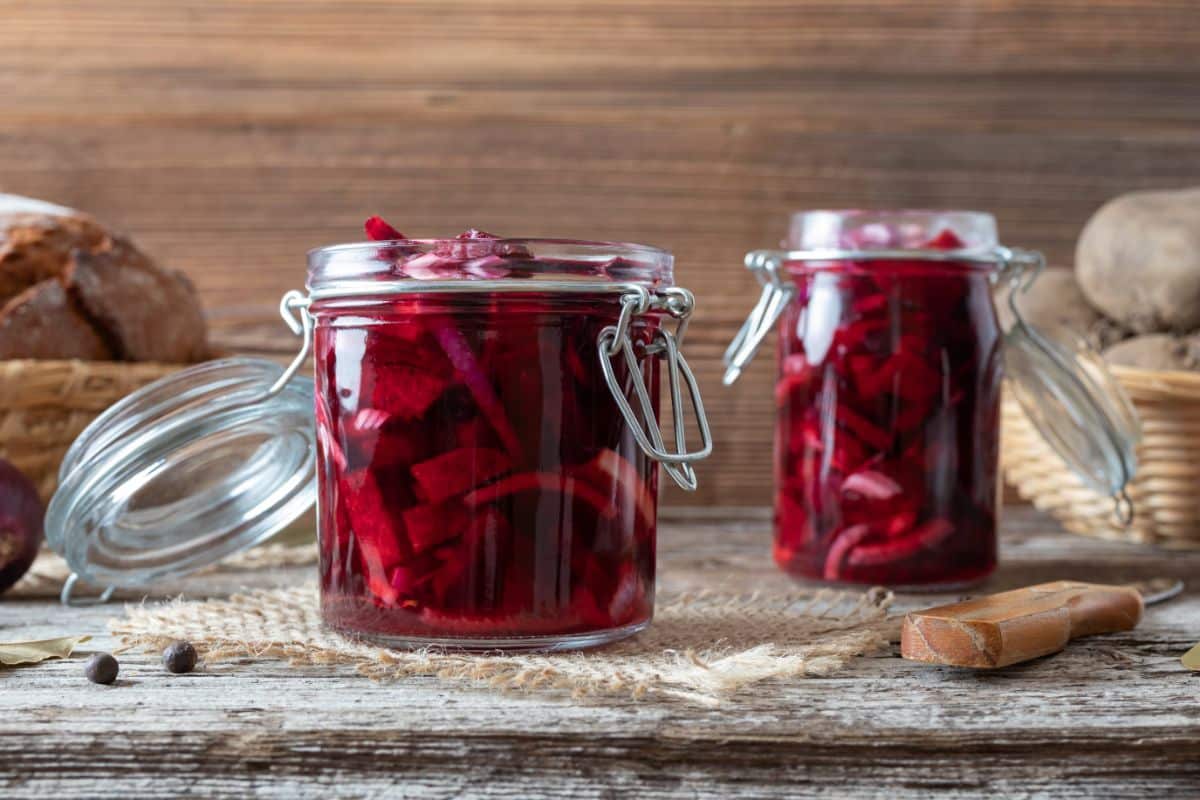
Beets are prolific growers, especially when temperatures are cooler in spring and autumn. So, if you end up with a bumper crops of beets, you’ll know what to do. Ferment them!
Prior to fermentation, prep your beets however you like them. You can shred them, chop them or peel them and keep them whole.
Beets can be fermented plain or with spices, or they can be mixed with cabbage for a colorful sauerkraut. A super versatile ferment, you really can’t go wrong with beets!
10. Snap beans
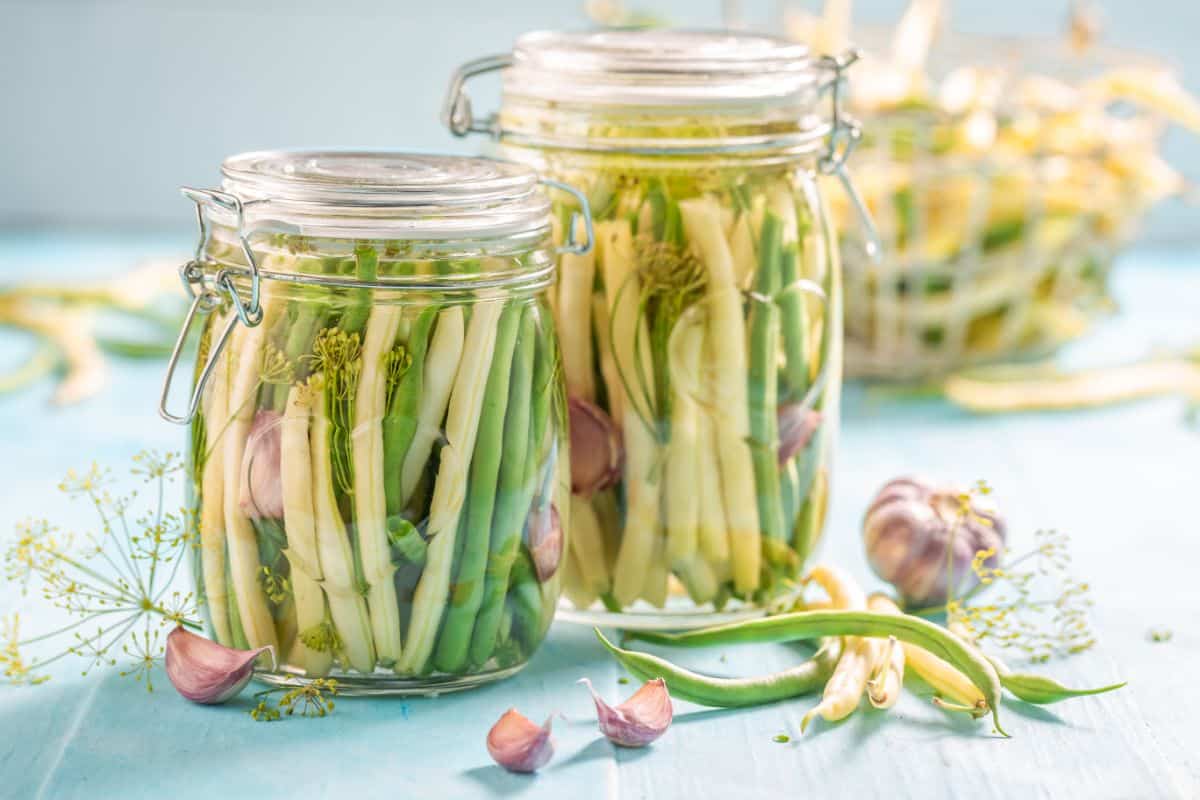
Green beans can become mushy and lose their bright green color when canned. But fermented beans retain much of their crunch and fresh flavor, making them a perfect ingredient for tons of dishes or a tasty snack all on their own.
Classic dilly beans are often canned, but they can be fermented too. For a new spin on an old classic, “pizza” beans are preserved with a similar technique; however, they use spices (like oregano and garlic) that are commonly found in pizza sauces for extra flavor.
Once preserved, fermented beans can be eaten as is, sauteed up with some olive oil and nuts for a scrumptious side or used as a salad topper. It’s up to you!
11. Celery
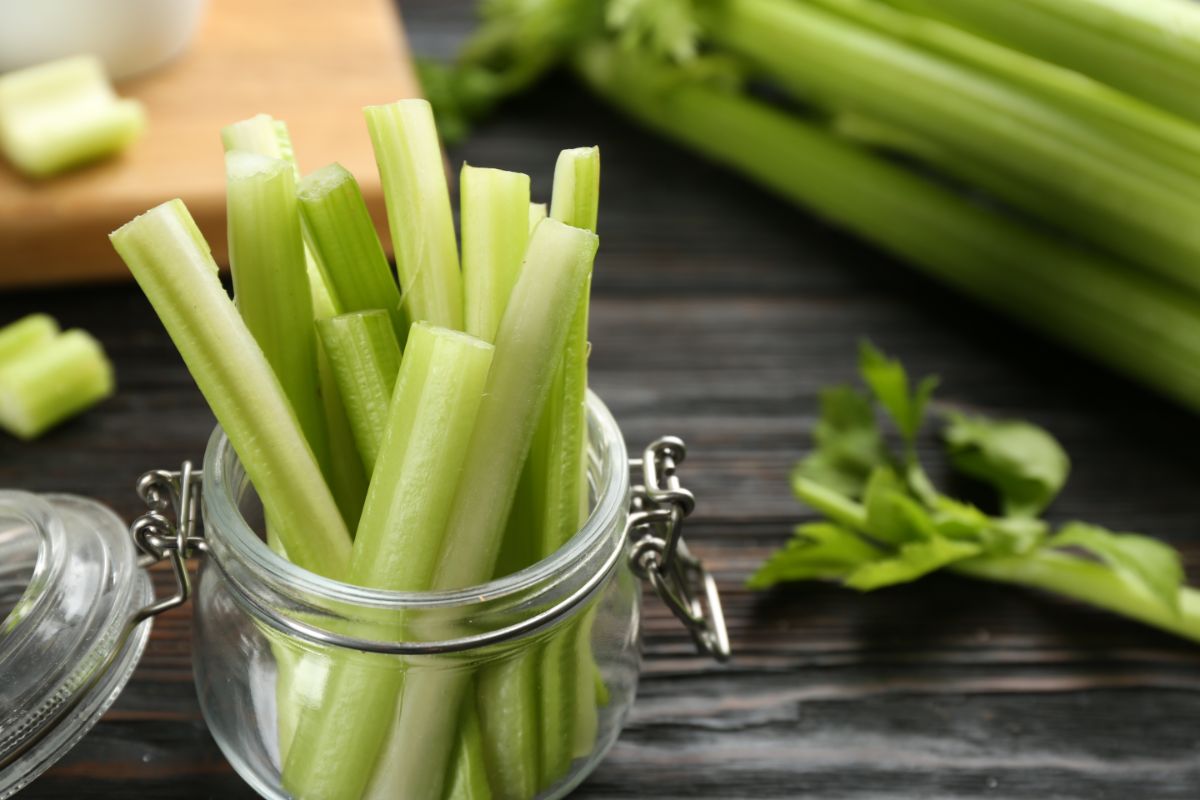
Celery may not be the first vegetable you think of when it comes to lacto-fermentation, but it is a tasty one. It is also one of the easiest vegetables to ferment and is able to be processed quickly due to its high water content.
After fermentation, celery slices can be eaten plain or mixed into traditional recipes like chicken noodle soup or salads.
If you like the heat, this mixed vegetable Szechuan ferment uses celery too!
12. Tomatoes
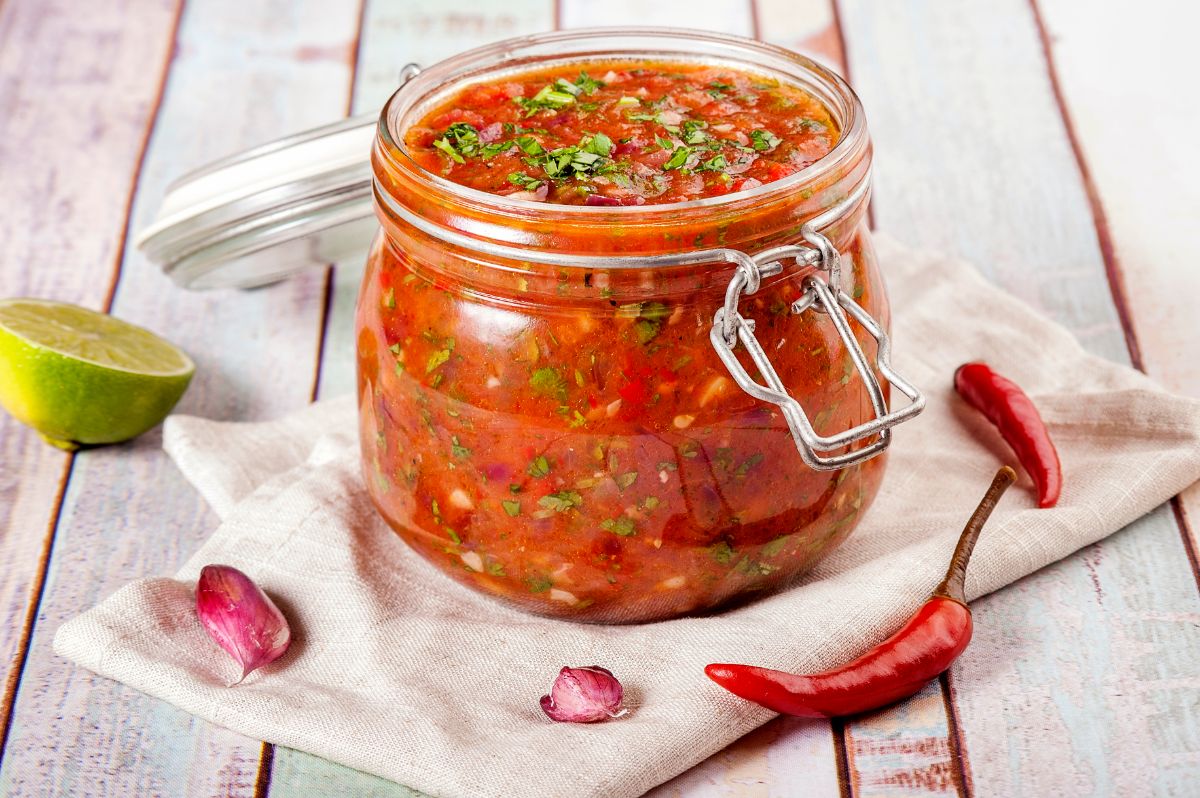
Tomatoes are most commonly preserved with canning to make homemade pasta sauces, salsas and stewed tomatoes. But tomatoes also lend themselves well to fermentation to create a final product that is bursting with gut-healthy probiotics.
Try fermenting extra cherry tomatoes to create a side dish with just the right amount of tangy flavor. Making homemade fermented tomato sauce is also a good choice as the fermentation process changes tomatoes’ texture. However, once those tomatoes are blended up into a scrumptious sauce, you won’t notice the texture difference at all!
For even more ways to use fermented tomatoes, try making homemade ketchup or this mouth-watering salsa.
Top lacto-fermentation tips
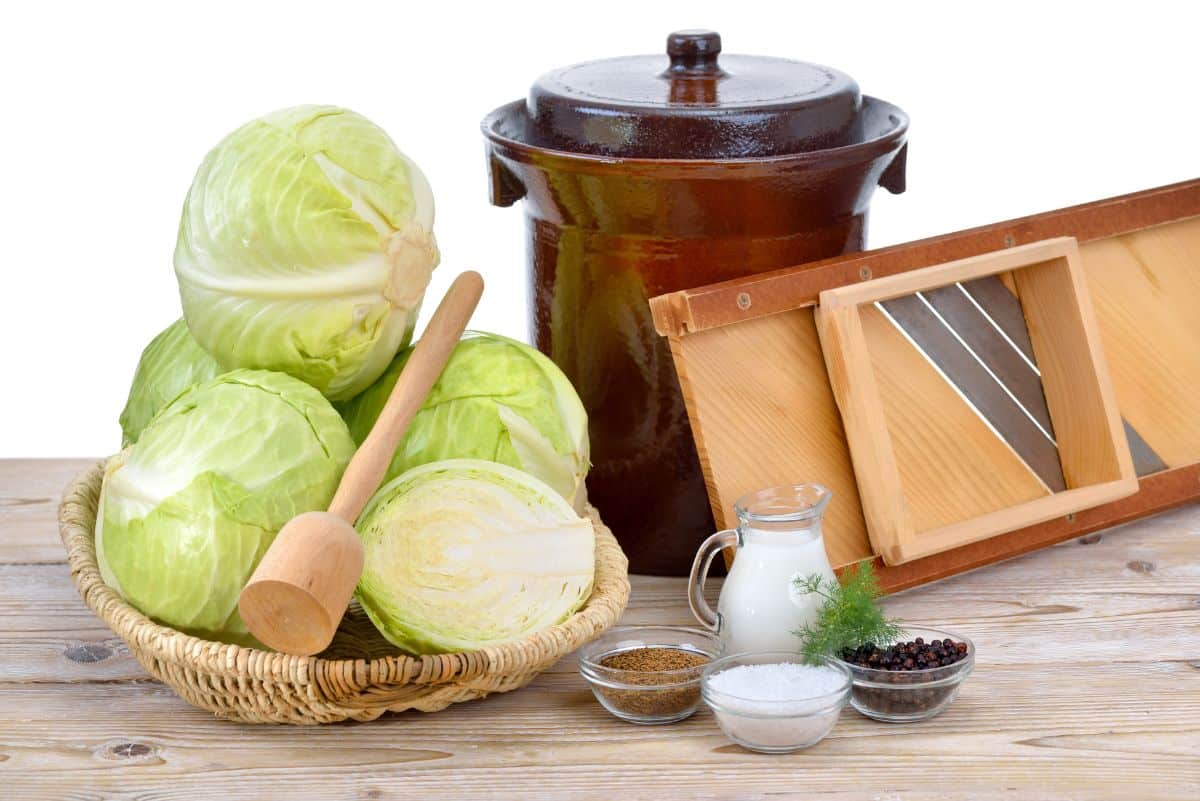
If you really want to get into the nitty gritty of fermentation, there are a number of helpful books you can try. However, for some quick fermenting tips, remember to:
- Use the right equipment. Generally speaking, you don’t need any fancy equipment for lacto-fermentation beyond some standard, glass canning jars. Using a fermentation kit or crock can make the job easier though!If you’re making sauerkraut, you’ll need to mash your cabbage quite a bit. While you can use any heavy object for the job, a sauerkraut pounder can help.
- Ferment for just one week. While some recipes may call for longer fermentation times, the longer you ferment vegetables, the softer they’ll become. This will be less of a problem if you intend to puree your fermented veggies (as in fermented hot sauces), but whole veggies will likely become limp, mushy and generally unpleasant.
- Keep your ferment submerged at all times. Any veggie portions that rise above the liquid brine and are exposed to air may develop mold. You can easily prevent this from happening by adding fermentation weights to your set up.
On the other hand, if your brine has evaporated, you can make additional saltwater brine.
- Don’t let pressure build up. Fermentation crocks often come with airlocks, which prevent pressure from building up too much. However, if you’re using a standard canning jar for your ferment, never fully tighten the lid during the fermentation process.This is because fermentation creates gasses, which can build up in your fermentation crock. A fully sealed lid leaves no space for those gasses to escape, which may cause your crock to explode. To prevent this, only screw lids on loosely.
- Ferment on a tray. As pressure builds up in your fermentation crock, it can cause liquid to spill out. To keep from creating a mess, place your crock on top of a plate or baking sheet while fermenting.
- Keep out of direct sunlight. You don’t want to ferment your veggies in direct sunlight. Instead, slip your fermentation crock into your pantry or under a kitchen cupboard during the fermentation process.
- Halt fermentation with your fridge. The longer you ferment your vegetables, the tangier they’ll become. To keep your veggies from getting too sour, place your ferment in your fridge to halt the fermentation process once you’ve achieved the desired flavor.
Frequently asked questions
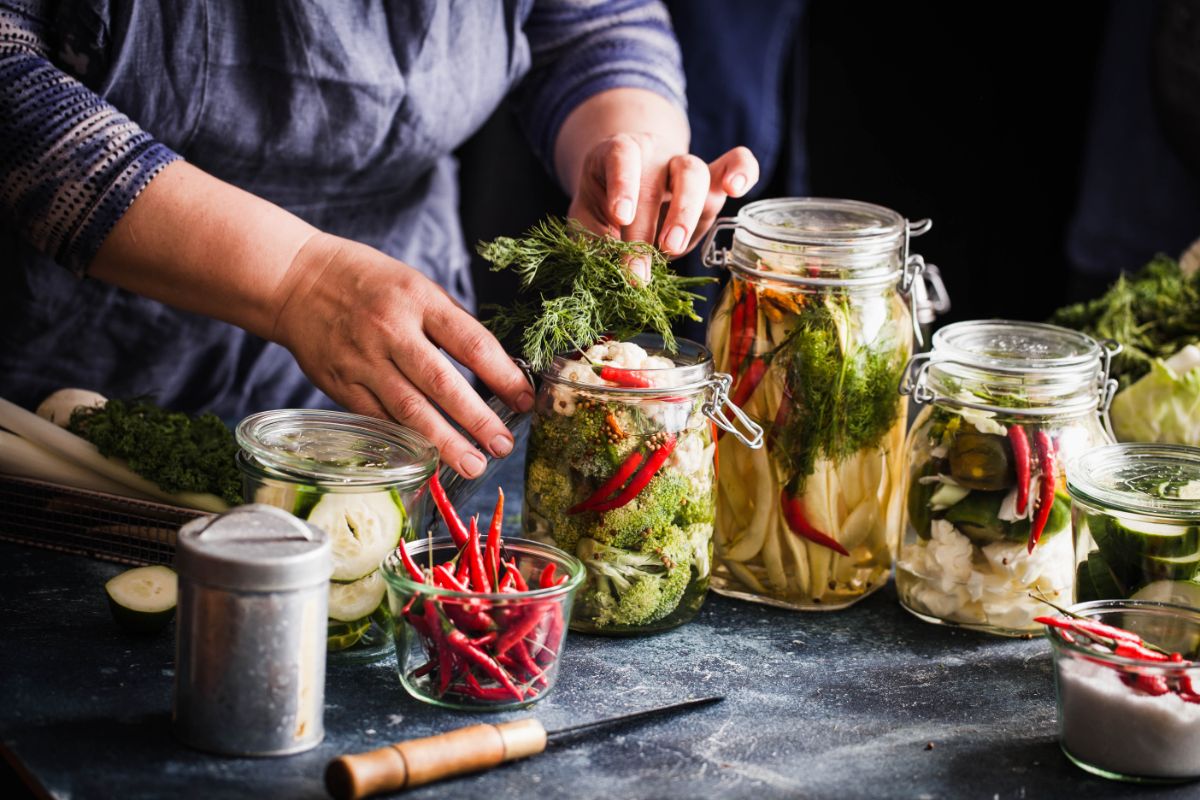
Lacto-fermentation is a food preservation technique in which the natural, beneficial bacteria and yeasts in the air break down the sugars in food to create lactic acid.
It is, as long as you follow the proper fermentation instructions. In fact, not only is lacto-fermentation perfectly safe, it may even be safer than canning due to the high acidity levels it creates.
Cooks new to fermentation often confuse kahm yeast with mold on their fermented foods. Kahm yeast is perfectly normal during fermentation and is safe to consume. Mold is not.
Kahm yeast is a very thin, flat film on top of ferments, which is usually white to cream in color and may contain trapped bubbles. Mold is raised up and is often fuzzy and can come in different colors, including white, green, blue, pink and black.
Summary
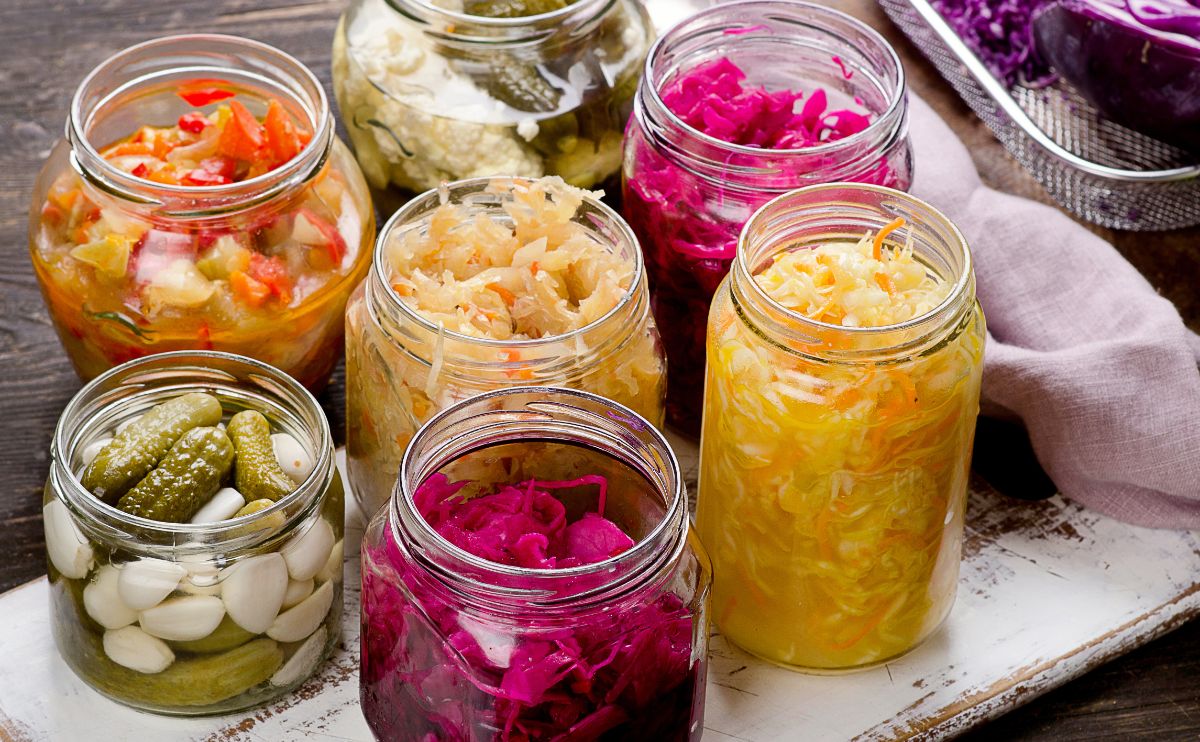
Lacto-fermentation is a lesser known food preservation technique; however, it’s been gaining popularity in recent years.
Simple to do and requiring minimal supplies, lacto-fermentation is a wonderful method to employ at harvest time to prevent food waste. But it also creates a delicious and tangy treat that is gut-healthy and full of probiotics too.
So, if you’re wondering how to put all those extra veggies to use, try fermenting them. Once you sample your finished product, we’re sure you’ll want to ferment foods again and again!
If you liked this article, check out our piece on making homemade acorn flour for another tasty DIY treat.

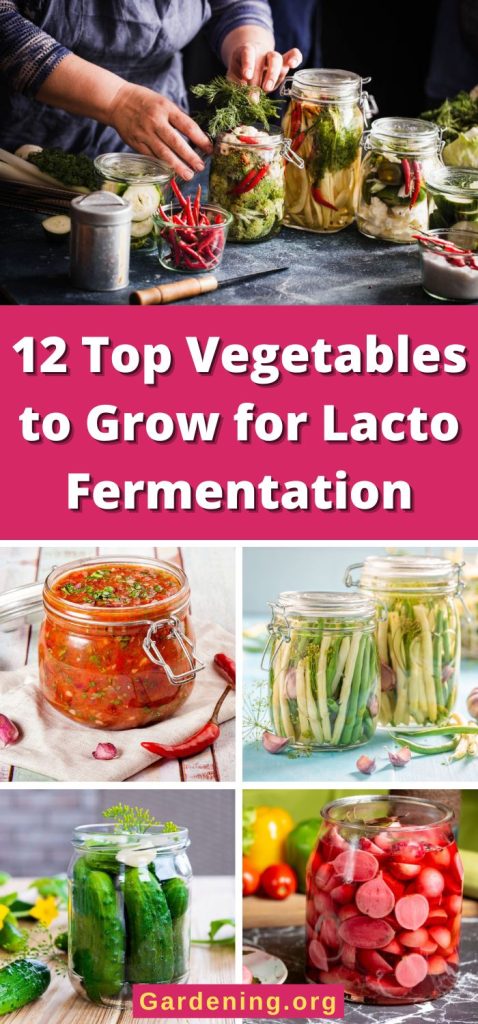

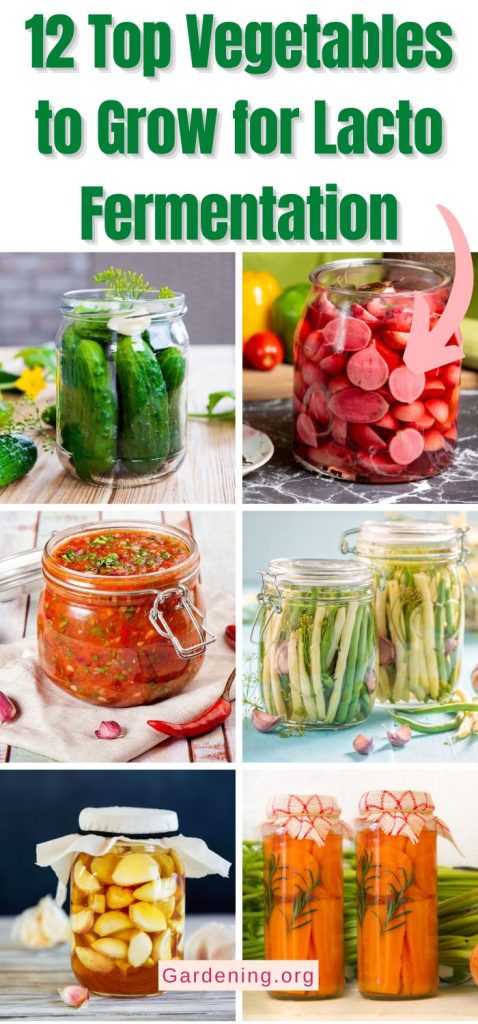
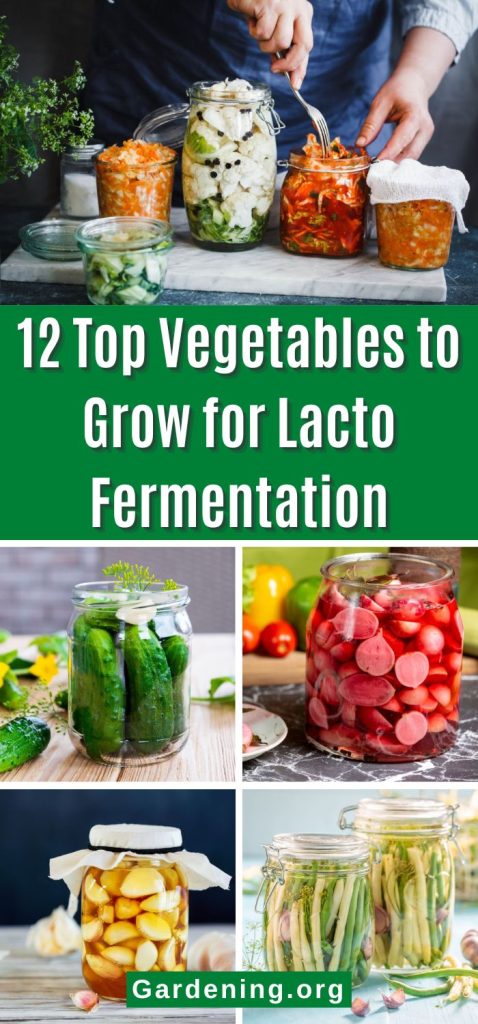
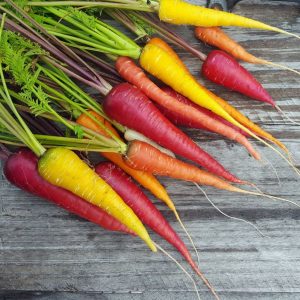

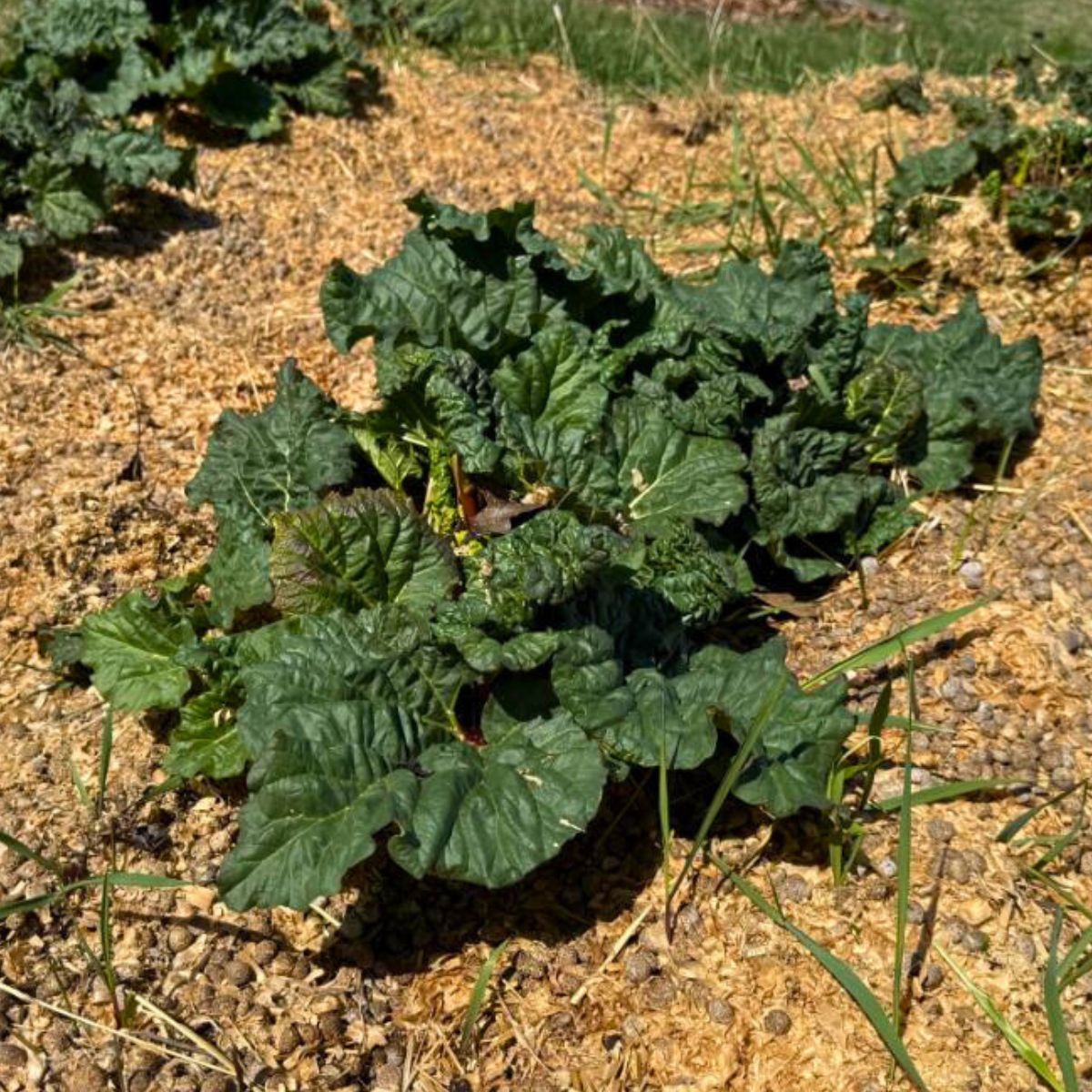

Anthony G Orlando
Hi, I'm new to fermenting and have questions about keeping some brine to use as a starter for future batches. Do I keep them at room temp or refrigerator?
Do I keep any vegetables in there or will the brine thrive on its own?
For how long does this work well?
Cheers!
Mary Ward
I would refrigerate the brine until you want to use it, and keep it without vegetables in it. It will get to work once you add the vegetable ingredients you want to ferment. I checked with the author and she agrees.
Marc
After I have fermented my vegetables for a week and am done, do I leave them in the brine in the fridge? How long will they last? If I remove them from the brine in the fridge, how do I store them? In water without salt? In a jar full of air?
Mary Ward
Leave them in the brine. You can find answers to this and storage time in the article. Thank You